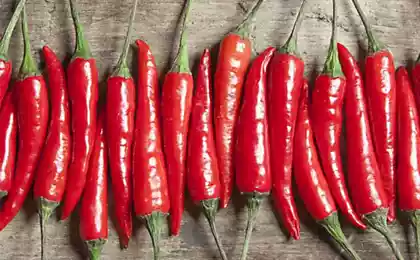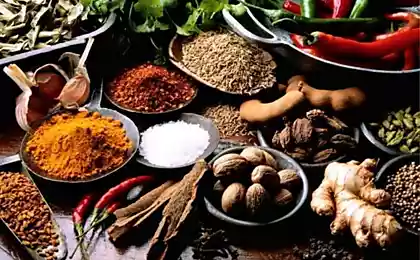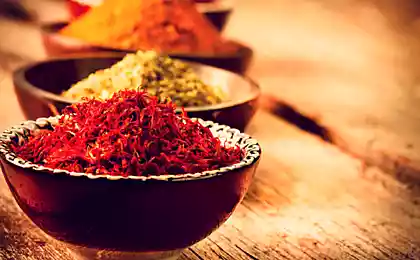684
Spices, which You may not have heard
Legend has it that the Pharisees paid tithing cumin. And in the 14th century in Germany, one pound of nutmeg could be traded for seven fat oxen. Spices played an important role in the ancient history of mankind. Today in supermarkets you can buy everything from nutmeg from Indonesia to the exotic vanilla from Tahiti. Few people even think about where I came from such familiar spices, like pepper in many of its variations, saffron, Basil and others. But today, I will introduce You with these spices, the existence of which You never knew existed.
1. Carolina Reaper
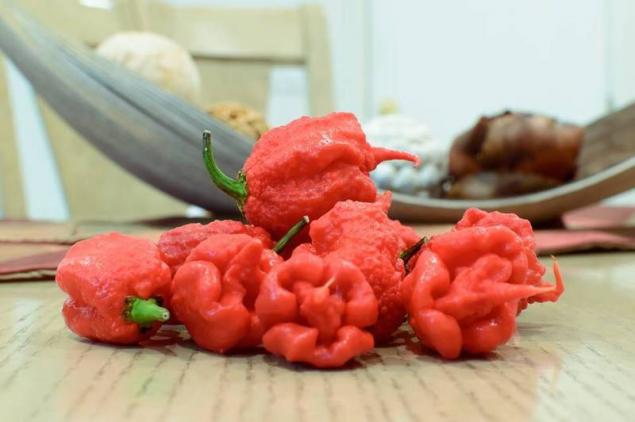
In 2007, the Bhut Jolokia pepper was listed in the Guinness Book of world records as the hottest in the world chili. It was not until 2012, until he "overthrew" a new variety -The Trinidad moruga scorpion.
Terms of Scoville (units of measurement of the severity Chile) this new species is about 1.2 million units, and its predecessor, 1 million Scoville. But it was not enough: in 2013, there was launched a new kind of chili pepper — Carolina Reaper, the severity of which is 2.2 million Scoville.
For comparison: usual pungent Hungarian paprika is from 100 to 500 Scoville and the spicy Tabasco sauce is about 1000 times "softer" Carolina Reaper.
2. Asafoetida (asafoetida)
Powder asafetida is one of the main spices of Indian vegetarian cooking.
It is produced from the roots and stems of a giant variety of fennel. This spice is also known as "chin", "Food of the gods", "Giant fennel", "stinking gum" and "excrement of the devil". The last two names clearly point to a distinctive characteristic of asafetida — its strong and stinking smell.
Fortunately, after cooking the smell is softened and velvety taste of this plant resembles a mixture of garlic, onion and leek, though in taste sensations cooked asafoetida is much milder than the onion-garlic mix.
3. "Grains of Paradise"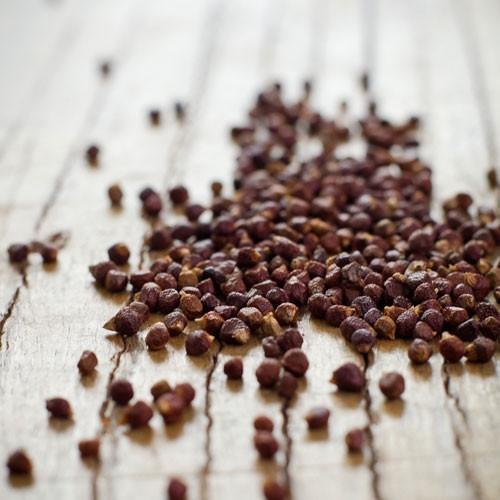
Spice is very similar to pepper, but the taste of "grains of Paradise" is unusual: it is similar to spicy peppers, and it has fruity and floral notes, and a bit like coriander and cardamom.
This spice is native to West Africa. Unlike regular pepper, the fruits are not dried and seeds are harvested only.
Many centuries ago, "grains of Paradise" used as a cheap substitute for black pepper, but today it is more rare seasoning, and therefore costly.
4. Mahlab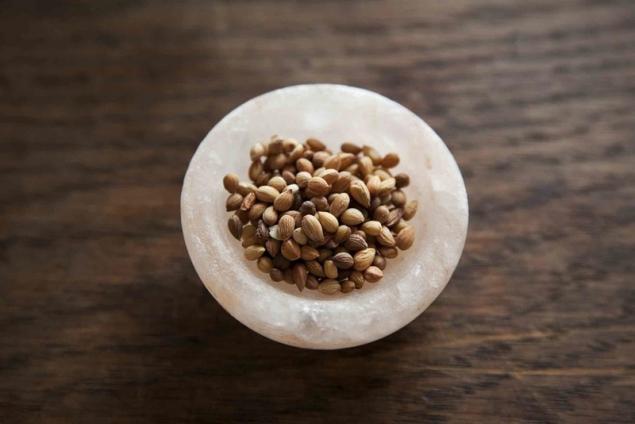
In the middle East and the Mediterranean, this spice is added to bread, cakes and cookies.
Mahlab has a deep and unique taste of cherry, but also has hints of rose, almond and vanilla. Produce a condiment from seeds of wild Mogilevskoi cherry.
You can find this seasoning in the form of bones, but most of it is sold already prepared, in the form of a powder.
5. Kalindi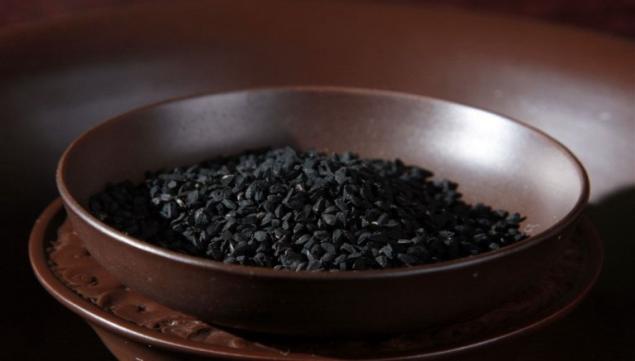
These small black seeds are used in India and the middle East as a seasoning for vegetables, legumes, salads and even bread.
In addition, kalindi is one of the ingredients in the Bengali spice mix Panch Foran. Taste, which have seeds — bitter-spicy.
Generally, before you use their fry, although you can use it raw. 7. Sumac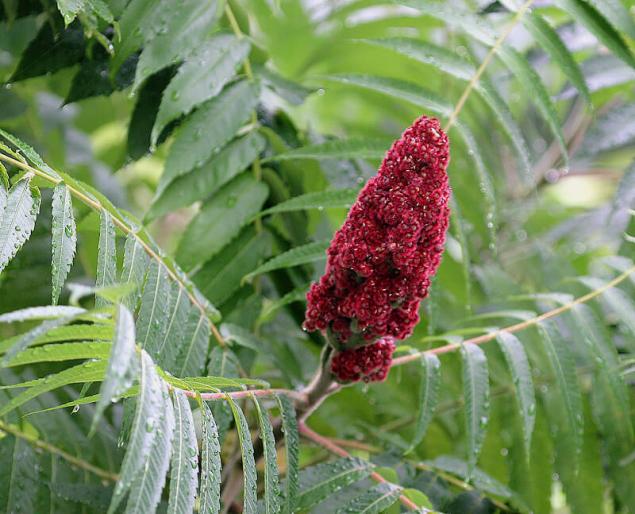
Bright red berries are harvested in Bush, sumac, dried and ground to obtain the spice.
Sumac is most often found in middle Eastern cooking, where it is used as acidifier.
The seasoning has strokely taste, but because of the bright colors it added to marinades, rice dishes, salads, sauces and other dishes.
8. Wattleseed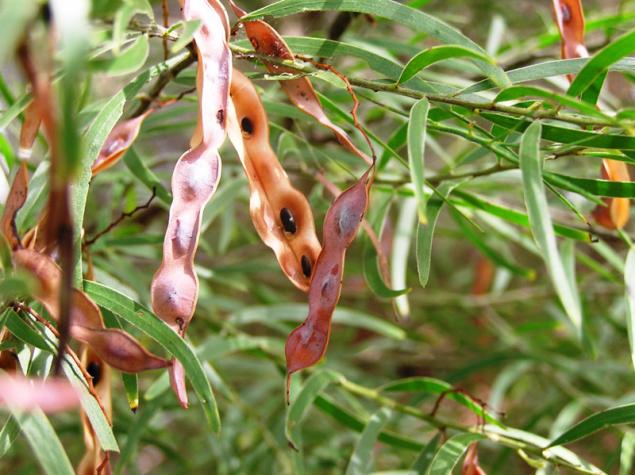
In Australia there is spice with the curious name of "wattleseed".
The seeds of Australian acacia. Oddly enough, but after frying over medium heat grain get notes of coffee, chocolate and hazelnut.
Very often "wattleseed" is used for flavoring ice cream, whipped cream, for topping cheesecakes and in the preparation of other desserts. published
P. S. And remember, only by changing their consumption — together we change the world! © Join us at Facebook , Vkontakte, Odnoklassniki
Source: mif-facts.com.ua
1. Carolina Reaper

In 2007, the Bhut Jolokia pepper was listed in the Guinness Book of world records as the hottest in the world chili. It was not until 2012, until he "overthrew" a new variety -The Trinidad moruga scorpion.
Terms of Scoville (units of measurement of the severity Chile) this new species is about 1.2 million units, and its predecessor, 1 million Scoville. But it was not enough: in 2013, there was launched a new kind of chili pepper — Carolina Reaper, the severity of which is 2.2 million Scoville.
For comparison: usual pungent Hungarian paprika is from 100 to 500 Scoville and the spicy Tabasco sauce is about 1000 times "softer" Carolina Reaper.
2. Asafoetida (asafoetida)

Powder asafetida is one of the main spices of Indian vegetarian cooking.
It is produced from the roots and stems of a giant variety of fennel. This spice is also known as "chin", "Food of the gods", "Giant fennel", "stinking gum" and "excrement of the devil". The last two names clearly point to a distinctive characteristic of asafetida — its strong and stinking smell.
Fortunately, after cooking the smell is softened and velvety taste of this plant resembles a mixture of garlic, onion and leek, though in taste sensations cooked asafoetida is much milder than the onion-garlic mix.
3. "Grains of Paradise"

Spice is very similar to pepper, but the taste of "grains of Paradise" is unusual: it is similar to spicy peppers, and it has fruity and floral notes, and a bit like coriander and cardamom.
This spice is native to West Africa. Unlike regular pepper, the fruits are not dried and seeds are harvested only.
Many centuries ago, "grains of Paradise" used as a cheap substitute for black pepper, but today it is more rare seasoning, and therefore costly.
4. Mahlab

In the middle East and the Mediterranean, this spice is added to bread, cakes and cookies.
Mahlab has a deep and unique taste of cherry, but also has hints of rose, almond and vanilla. Produce a condiment from seeds of wild Mogilevskoi cherry.
You can find this seasoning in the form of bones, but most of it is sold already prepared, in the form of a powder.
5. Kalindi

These small black seeds are used in India and the middle East as a seasoning for vegetables, legumes, salads and even bread.
In addition, kalindi is one of the ingredients in the Bengali spice mix Panch Foran. Taste, which have seeds — bitter-spicy.
Generally, before you use their fry, although you can use it raw. 7. Sumac

Bright red berries are harvested in Bush, sumac, dried and ground to obtain the spice.
Sumac is most often found in middle Eastern cooking, where it is used as acidifier.
The seasoning has strokely taste, but because of the bright colors it added to marinades, rice dishes, salads, sauces and other dishes.
8. Wattleseed

In Australia there is spice with the curious name of "wattleseed".
The seeds of Australian acacia. Oddly enough, but after frying over medium heat grain get notes of coffee, chocolate and hazelnut.
Very often "wattleseed" is used for flavoring ice cream, whipped cream, for topping cheesecakes and in the preparation of other desserts. published
P. S. And remember, only by changing their consumption — together we change the world! © Join us at Facebook , Vkontakte, Odnoklassniki
Source: mif-facts.com.ua



